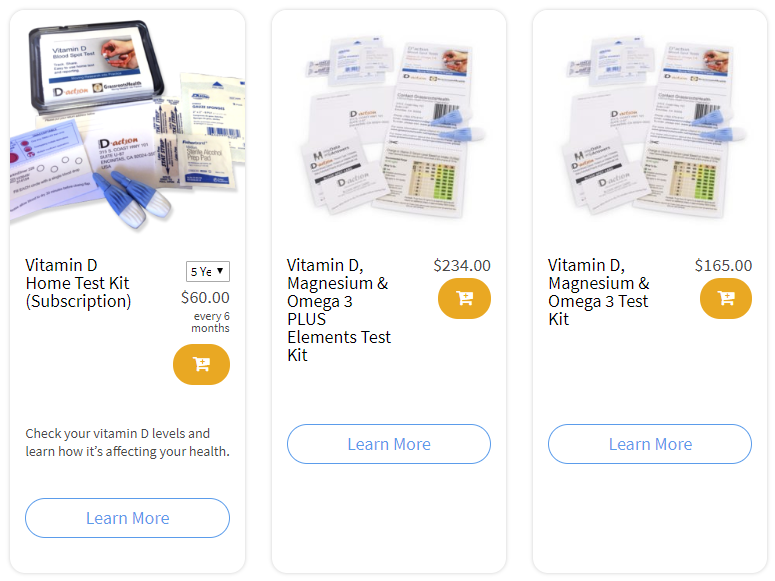Published on August 18, 2020
 In 2017, GrassrootsHealth added questions about dietary omega-3 intake to its questionnaire to collect the typical number of meals containing fatty fish, such as salmon, sardines, and tuna, or plant-based omega-3s per week. Today, we’ll look at how the percent of fatty fish eaters varies by location.
In 2017, GrassrootsHealth added questions about dietary omega-3 intake to its questionnaire to collect the typical number of meals containing fatty fish, such as salmon, sardines, and tuna, or plant-based omega-3s per week. Today, we’ll look at how the percent of fatty fish eaters varies by location.
Among GrassrootsHealth participants worldwide, 64% consume at least one meal with fatty fish per week on average. For the three countries with the greatest number of participants who reported their fatty fish intake, the percent of fatty fish eaters was 63% in the United States, 72% for Canada, and 76% for the United Kingdom. This tracks with the average Omega-3 Index levels for participants in these three countries (5.7%, 6.2%, and 7.5% respectively). Below is a map showing the percent of fatty fish eaters by state / province / territory for those residing in the United States or Canada.
Are you getting enough omega-3s from the fish you eat?
Have you measured your Omega-3 Index lately to make sure? Test your levels today and adjust your supplementation and/or diet as needed to ensure you are maintaining an Omega-3 Index level of at least 8%. Use the Omega-3 Calculator to help determine how much DHA+EPA you may need to help you achieve your target Omega-3 Index based on where you are at now!
Are You Getting Enough Vitamin D to Help Yourself?
We’re in a time of great crisis that could be greatly affected by making sure you and everyone you know has a serum level of at least 40 ng/ml. Help us help you.
Do you know what your vitamin D level is? Be sure to test today to find out, and take steps to keep it within a target of 40-60 ng/ml or 100-150 nmol/L! Give your immune system the nutrients it needs to support a healthy you and protect yourself from unnecessary diseases.
GrassrootsHealth Nutrient Research Institute is preparing to do a Community RCT with the use of our myData-myAnswers nutrient health system that over 15,000 people are already using for their health. We will demonstrate how one can use the Nutrient Research Model established by Dr. Robert Heaney to establish the effect of vitamin D serum levels of at least 40 ng/ml (100 nmol/L) on risk reduction with different ethnicities in the population. Please let us know if you’re interested in helping sponsor this project.
CLICK HERE for updates and new information about the project.
Through GrassrootsHealth Nutrient Research Institute, you can also test your essential elements magnesium, copper, zinc and selenium, toxins such as lead, mercury and cadmium, as well as your omega-3 levels, inflammation levels and thyroid stimulating hormone (TSH) level. Find out your levels today! Log on to the test selection page (click the link below) to get your tests and see for yourself if your levels can be improved.
Make sure you track your results before and after, about every 6 months!
Click Here to Access the Test Page
How can I track my nutrient intake and levels over time?
To help you track your supplement use and nutrient levels, GrassrootsHealth has created the Personal Health Nutrient Decision System called
For each specific supplement, you can track what days you take it, how much, and many other details. This will help you know your true supplemental intake and what patterns of use work for you to reach and maintain optimum nutrient levels. Check it out today!









